0 Comments
spent learning and tramping about fields and meadows at Brookfield Farm at the end of June, the timing of our introduction felt significant.
For centuries, sainfoin (which translates from French as “healthy hay”) enjoyed widespread pride of place in traditional land cultivation throughout the world. So ubiquitous was this forage legume in the U.K., it is said that one in seven fields in southern England were covered in its pink flowers until the mid-1940s. Considered by farmers as the ‘best cog in the farming wheel’, it was recognised for its successful and beneficial use in pasture fields as fodder for ruminants, but also as a miracle crop that gave back to the soil. Sainfoin boasts so many benefits to humans, grazing animals, and the planet alike that it seems incredibly nonsensical for it to have ever fallen out of favour. When you understand the context behind its decline in popularity, though, things start to make more sense. As the penny drops, I challenge you not to nod in a knowing and jaded manner. Why did sainfoin lose popularity? Sainfoin was just one victim of the creeping loss of long-held wisdom and knowledge about crop diversity and soil health as the industrialisation of agriculture and “yield is king” era pushed other more “productive”, more “efficient” crops up the pecking order. Farm support payments of this era insisted upon prioritisation of intensive production and output. Creation of and reliance upon a monoculture of crops decided upon as the most reliable (and use of synthetic fertilisers to enforce this reliability) was deemed to be the answer. At the time, sainfoin’s tendency towards inconsistent yield and slow regrowth meant it didn’t make the cut. As is often the case, decisions or paths taken that seem ridiculous to us in hindsight, with the benefit of that hindsight and of the information available to us now, can be more easily understood if viewed through the lens of the mainstream thinking that led the charge at the time. Of course, the disappearance of sainfoin from our land dovetails with this ethos of the post-war Green Revolution. But the times are changing. For those involved in regenerative and sustainable agriculture, interest in the powerhouse that is sainfoin is enjoying a resurgence. Benefits of sainfoin The benefits of utilising sainfoin in agriculture are manifold. In contrast to many of the cereals and grasses currently used in pasture, sainfoin, as a member of the forage legume family, offers high protein content and more effective utilisation of that protein within the animal’s system. Another digestive benefit of sainfoin is down to the tannins it contains, which help to prevent bloating. Nutritious, organic, filling food for happily grazing sheep and cattle can only be a good thing, but this is not the only plus - limiting bloating also means reduced ammonia and methane emissions, and we know how pressing of a concern reducing greenhouse gas emissions from the agricultural sector is. Sainfoin is also known for its ability to “fix” nitrogen from the atmosphere, ie: to sequester it in the soil and use it for the benefit of both its own growth, and the growth of any crops grown either with it or after it. While many plants unfortunately lack the capability to access and utilise the abundant nitrogen available in the atmosphere, the way sainfoin manages it is fascinating to learn about. Sainfoin partakes in a symbiotic process whereby bacteria with the ability to break nitrogen bonds make their home within the sainfoin plant, thus acting as its own personal pure nitrogen provider. It goes without saying that this natural process of providing nitrogen for plant and soil health is preferable to the use of its synthetic counterpart. While sainfoin is working its magic at fixing nitrogen back into the soil, it can tolerate low quality soil - this is particularly important to consider given the depleted nutrient value of much of our soils at the moment. In fact, there is evidence from the 1800s that tenant farmers were required to use sainfoin in order to maintain soil fertility. Further, due to this nutrient sequestration, as well as the way it responds to heat and light, sainfoin will actually produce higher yields as the planet grows warmer. It has also been proven to be both drought and frost tolerant. This is in contrast to many other forage legumes currently in use, such as alfalfa and clover, which have been shown to struggle with the abrupt and extreme changes in weather. This is just another way in which re-integration of sainfoin makes utter sense in a world where agricultural practices need to be adapted to the challenges presented by climate change. Sainfoin’s welcome contribution towards tackling our climate and biodiversity crises doesn’t end there. Through its ability to fix nitrogen, we have already seen how sainfoin is a dream come true for soil health and biodiversity. As a rich source of pollen and nectar, sainfoin is extremely attractive to pollinators of all types, meaning it also does an incredible job at promoting biodiversity of, and maintaining stability of, local ecosystems. While pollinators are welcome, pests and disease are not. Taken alongside many of its fellow legumes, sainfoin is known to be comparatively rather resistant to potentially serious pest and disease problems. On the topic of disease, sainfoin has long been lauded for its medicinal properties, even referred to in Italian as “herba medica”. The tannins in sainfoin have been shown to have potential as an untapped natural resource in replacing the need for anthelmintic (anti-parasitic) drugs in animal farming. Biological solutions are much preferred to these medications - not only do these drugs become increasingly ineffective as resistance to them builds over time, finding natural ways to combat against illness and disease is an overall kinder, healthier, and more cost-effective solution than relying on regular administration of drugs. In the face of threats to the status quo of current agricultural systems posed by climate change; in the face of worries about inconsistent or non-existent harvests of crops whose seasonal reliability we have carefully managed but are now less able to predict, sainfoin is a shining beacon leading us down a new path for the changing seasons we now must adapt to. Conclusion Huddled under the protection of some nearby trees while the unseasonal wind and drizzle did its best to steal away our enthusiasm, I encountered sainfoin for the first time. It captured my attention so fully because it is an emblem of some of the most pressing questions, we need to turn our attention to: why we have allowed ourselves to lose so much knowledge and diversity, and how to rethink our current food and farming systems in a way that acknowledges the significance of this loss, and attempts to redress it. If blindly continuing with a now broken food system that we created to solve problems from half a century ago is the problem, the answer is taking lessons from the past, incorporating them with new knowledge and applying them for our current reality. The story of sainfoin is not a unique one. We have forgotten, and are on the verge of losing, countless food varieties worldwide - varieties that could be pivotal in helping us to face catastrophes to come. Sainfoin can serve as a starting point in considering this. It shows that protecting and reintroducing the wisdom, techniques, and diversity we have allowed ourselves to lose or to ignore is integral in building kinder, healthier, more equitable and sustainable, less extractive, regenerative food and farming systems. Resources Carbonero, C. H., Mueller-Harvey, I., Brown, T. A., & Smith, L. (2011). Sainfoin ( Onobrychis viciifolia): a beneficial forage legume. Plant Genetic Resources, 9(01), 70–85. https://doi.org/10.1017/S1479262110000328 Sheppard, SC, Cattani, DJ, Ominski, KH, Biligetu, B, Bittman, S, McGeough, EJ. Sainfoin production in western Canada: A review of agronomic potential and environmental benefits. Grass Forage Sci. 2019; 74: 6– 18. https://doi.org/10.1111/gfs.12403 Kelly Girardi Instagram @kelly_girardi Linktree kelly_girardi
own thoughts on food, on eating, on our relationship with it in the years since, I now see, in re-reading her work with fresh eyes, that many of my own now firm-held beliefs and feelings around food were being explored and centred by Grigson decades before I was even born. The word ‘pioneer’ is thrown around a lot - but she really was. In her way of thinking and writing about food, its value, its connections and implications, she was, that other cliché, ahead of her time.
This is a sentiment shared by fellow British food writer, Elizabeth David, from whom Grigson took inspiration, and with whom she developed a close friendship, frequently enjoying “long Sunday morning telephone conversations” together (a true sign of times gone by - can you imagine the reaction if you rang someone up first thing on a Sunday morning for a long chat nowadays? Your number would be deleted from their phone forever more). David remembers the effect of Grigson on the world of food writing when she first appeared on the scene in the 1960s. Describing what a breath of fresh air she found her, and her writing, to be, she reminds us how rare food writing such as Grigson’s was at the time, highlighting “the clarity of writing, and the confident knowledge of subject and history”. Grigson was, indeed, tireless in her endeavour to do more in the world of food writing than just be a lister of ingredients and recipes. All of her books read almost like wonderfully accessible culinary textbooks, leading us through in-depth explorations of the history of food, of the provenance of ingredients and recipes, never forgetting to address the ways in which this is relevant today. Through Grigson’s writing, she paints a picture of the background to our relationship with food. Through thoroughly researched and expertly-explained accounts, she teaches us about culinary heritages and their influences, as well as offering eerily accurate musings on future food concerns, predictions that have turned out to be extremely prescient. I drew this distinction before in my writings on Anna Jones, and on Nigel Slater (a protégé of Grigson’s, in a way. In following in her footsteps as a food columnist for The Observer, Slater has often referred to the influence Grigson’s writing had on his own) - what makes someone a true food writer, what makes a book more than just a run of the mill cookbook, is the obvious passion of the writer, the thought and research put into the topic, and the awareness that this is their life, this is truly how the writer cooks and eats and thinks. In making it obvious to the reader that food, its meaning, its history, its centrality in our lives is a passion of theirs rather than just a way to make money, the writer draws us in and gains our trust. We trust them to teach us, not just to tell us, about food, and how it shapes our lives. Grigson wrote primarily about the relationship the people of Britain have with food. The trope of British food as inedible irked her. What is British food, anyway? Britain’s local, raw ingredients, in fact, encompass an extraordinarily broad array of fresh, flavourful and nutritious produce. Its culinary history includes many seasonal recipes which showcase this. (While I’m speaking about Britain here, as this was the main focus of Grigson’s writing, this discussion is highly relevant to us on this island, too). That people might not be aware of this is not a failure of the land to provide the food, or of those who came before for not passing on their knowledge of “good food”. It comes from a commodification of food, and a subsequent loss of connection. Whether due to lack of time or habit of convenience or more pressing priorities, many of us have just lost, or never nurtured, connection with food, how to prepare it, how to appreciate it. As Grigson put it: “the weakness is [...] the lack in each of us of a solid grounding in skill and knowledge about food, where it comes from, how it should be prepared”. She was fully aware of the reasons for this, the challenges facing the ways in which we produce and access food. While glad of the reassurance provided by “the background of an unfailing larder”, and understanding of the convenience of frozen, canned, pre-packaged ingredients, she worried about our increasing disconnect from food at its source, the waning interest in preparing meals from scratch using fresh ingredients, and the effect that this disconnect and convenience might have on future generations. She worried what blind acceptance of this new relationship with food would mean for food history, food culture, and our overall ability to truly enjoy the process of preparing meals with fresh, local, seasonal food. She was adamant in her belief that to lose this ability is to lose too much: “The sad thing is that, unless we fight, and demand, and complain, and reject, and generally make ourselves thoroughly unpopular, these delights may be unknown to our great-grandchildren. Perhaps even to our grandchildren. It is certainly more convenient with growing populations, to freeze the asparagus and strawberries straight from the ground, to dye and wrap the kippers in plastic, to import hard, red frozen lamb from New Zealand, and to push the walnuts straight into drying kilns.” She described this way of thinking of food as “back to the primitive idea of eating to keep alive”. Seeing food as mere sustenance, a chore to get out of the way, rather than something to relish and take time over. The term “food snob” is a common refrain launched at those who extol the virtues of “local”, “seasonal”, “organic”, at those who are accused of turning their noses up at frozen and canned supermarket foods. As noted above, there is, indeed, a role for this way of preserving, transporting, and storing food. It is important to acknowledge, though, that, for many, the focus on fresh and local isn’t based on some sort of puritanical idea of “good” food and “bad” food. The slow food and organic movements didn’t pop up just so the world’s snobs could all gather and have a good laugh at everyone else. It is based on an awareness of what is at stake when we eschew local farmers and producers and turn solely to supermarkets. Grigson was utterly prescient on this, on her discussion of the nefarious role of big business and marketing in our food system, on the damage it has done to local farmers and producers, to our community connection, to our conception of in-season produce, to food diversity and to the pockets of but a few. In her words: “It is also true that a good many things in our marketing system now fight against simple and delicate food. Tomatoes have no taste. The finest flavoured potatoes are not available in shops. Vegetables and fruits are seldom fresh. Milk comes out of Friesians. Cheeses are subdivided and imprisoned in plastic wrapping. ‘Farm fresh’ means eggs which are no more than ten, fourteen or twenty days old. Words such as ‘fresh’ and ‘home-made’ have been borrowed by commerce to tell lies.”. But we are not just losing flavour and freshness in relying on a handful of companies to provide our food to us. While the effect of our food systems on the environment and the climate has become painfully obvious to us in recent years, Grigson was already aware of the environmental effects of producing and supplying food in the way we have become accustomed to: “The encouragement of fine food is not greed or gourmandise; it can be seen as an aspect of the anti-pollution movement in that it indicates concern for the quality of environment. This is not the limited concern of a few cranks. Small and medium-sized firms, feeling unable to compete with the cheap products of the giants, turn to producing better food.”. That the words she wrote throughout the 1960s and beyond still hold true today, if not more so, speaks to her deep understanding of and connection with food, its history and its value. On my re-reads, David’s description of Grigson as “always entertaining as well as informative” repeatedly sprang to mind. Entertaining she was. While she admirably managed to walk the fine line between explaining her research and her thoughts, rather than preaching, she refused to pander. On occasion, when something really bothered her, she didn’t hold back. I found this sometimes loss of political correctness and sudden inability to mince her words to be highly entertaining. I delighted in her straightforward, unapologetic way of voicing her opinions on these occasions - it struck me that she most certainly existed in a world before social media, where many of us now are much more careful with our words, testing the water before committing to a stance, for fear of backlash. An example: at the sheer mention of “organic” or “local”, the rebuttal proffered is often that of cost. Of course, certain food is cost-prohibitive for some, but what Grigson took issue with was the bandwagon crew who wave this opinion around as an excuse, rather than a genuine reason. In her book English Food, Grigson lampoons the “entirely populist point of view” that spending extra on quality food is unreasonable to expect of people. She writes: “In a country that spends the amount ours does on hard liquor, gambling, ice cream of a worthless kind, sweets, cakes, biscuits, this is nonsense. If people choose to spend it that way, fair enough. But let them not plead poverty as an excuse for bad food”. At the core of it all, Grigson’s emphasis was on appreciating and making the best of what was available. Yes, she championed the importance of fresh, tasty, good quality, seasonal food, which, contrary to popular belief, existed in Britain in abundance, if only people were interested enough to open their eyes to it (again, this is, of course, relevant here in Ireland, too). Yes, her main advice, really, was to be conscious and aware, to care, to visit local markets, learn what is in season, stock your store cupboards, learn some basic cookery skills, take an interest. But she was also realistic and nuanced in her thinking and expectations. We will all rely on convenience. We will all make excuses. As long as we are confident within ourselves that we are trying our best as much of the time as is possible, that’s the best we can do. A last note: Spending part of the year in France (it is said that her move to France is what really spurred her interest in the world of food writing: "because cooking is a central part of life, it should be as carefully written about as any other art form"), Grigson was endlessly aware of, and wrote thought-provokingly on, the shared nature of food cultures, reminding us that “no cookery belongs exclusively to its country, or its region”. Instead, “what each individual country does do is to give all the elements, borrowed or otherwise, something of a national character”. Think of the beauty of this truth. Revel in the knowledge that all well-loved recipes and dishes are essentially tweaks, replications. If we think of cooking like this, then we achieve two things: we feel a sense of excitement and pride in these dishes that have been transplanted and layered on and passed down, and we discover that we are all capable of cooking. As she put it: “Anyone who likes to eat can soon learn to cook well”. I’ll end with a quote that especially resonated with me. I feel it encapsulates Grigson’s attitude, and writing, very well. “Somehow I can never quite suppress a naive optimism; an optimism that is buffeted every time I visit my local shops, but yet refuses quite to lie down even when confronted with perceived realities.”. I feel a little bit of naive optimism might be just what is needed at the moment. Jane Grigson books Quoted and Referenced Good Things (1971) English Food (1974) Jane Grigson’s Vegetable Book (1978) The Enjoyment of Food: The Best of Jane Grigson (1992) Kelly Girardi Instagram @kelly_girardi Linktree kelly_girardi
But things have moved on and there are now new vegan cheeses on the market; some new alternatives to dairy cheeses that actually work pretty well. These ‘cheeses’ are fermented and I believe it is makes all the difference to the taste, giving that tanginess we like from dairy cheese, but none of negatives of dairy – guilt-free and tasty.
INGREDIENTS
METHOD
Wonderful eaten with a nice green summer salad. Bon Appétit @HungrySoulVegan - Changing the Culture
with them and I didn’t feel like eating them as a cold dish, so I had to devise a dish that I could cook quickly that used store cupboard ingredients. I thought of making something vaguely Mexican using plenty of coriander and this is what I made.
This dish took less than 30 minutes to cook and is even more delicious the second day – if there is any left over. Serves 4 with rice. Ingredients
Method
I served this with brown rice but white rice or even new potatoes would work just as well. If you decide to spice up this dish with plenty of chilli remember to serve some yogurt on the side to cool your palate. ENJOY! Katie Verling  Too Good To Go: an innovative app helping to tackle the issue of food waste If you’re a keen and regular reader of our newsletter, you’ll remember that last month we promised we would be continuing to highlight the efforts we make here to contribute to the circular economy as best we can. This month under the spotlight is our recent addition as a supplier on The Too Good To Go app. The Too Good to Go project came to life in response to the distressing reality of food waste, an issue which pervades not just our homes, but the entire food and retail industry. From the point of production, one third of all food produced finds itself going to waste - whether that be at some point along the supply chain, or at its destination point in our homes, shops and restaurants. Here at The Urban Co-op, we maintain a direct connection with so many local food suppliers. We find it particularly affecting to imagine that, after the effort and time and care that goes into producing food for this planet, so much of it ends up just going to waste. In the spirit of transparency, we are, of course, guilty of contributing to food waste. As a grocery shop, it can be unavoidable - it would be a case of matching our ordering absolutely perfectly with what our customers buy on a daily basis. Safe to say, this is impossible. While we do constantly tweak our ordering in efforts to avoid too much going to waste, it can naturally occur that we are left with unsold fresh foods at the end of the day - fruits, vegetables, meat and dairy. This is where the Too Good to Go app comes in. We, the retailer, register with the app. At the end of each day you, the customer, can log in and order a “Magic Bag”. You pay €3.99 for high quality produce that would otherwise add up to roughly the value of €12. We put together bits and pieces that would otherwise be on its last legs if left another day on the shelf, and you collect it before the shop closes. Using the Too Good To Go app has made us, and hopefully our customers, feel that we are helping combat food waste in some small way. It can also be such a fun experiment in flexing your culinary skills - by collecting a food box with no prior knowledge of what it will contain, you’ll be forced to be inventive! These small actions might not be the silver bullet needed to tackle the bigger issues, but action begets action. Keeping our enthusiasm and pride in what we believe in alive by committing these small yet meaningful acts is hugely important - and you never know what small steps can eventually lead to. Kelly Girardi Instagram @kelly_girardi Linktree kelly_girardi |
Categories
All
Archives
July 2024
AuthorsRecipes from Katie Verling & Jacques |

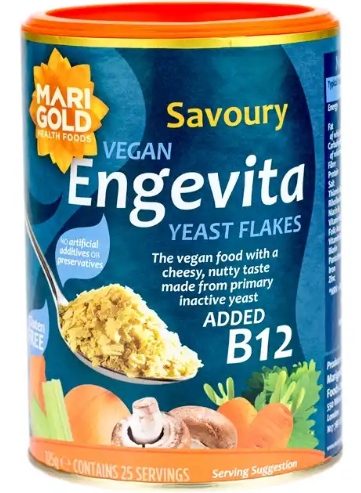
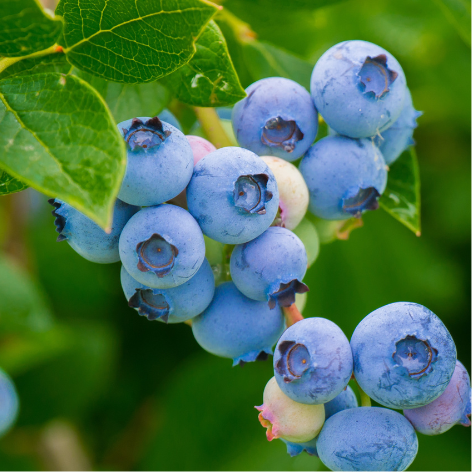

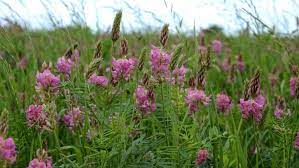
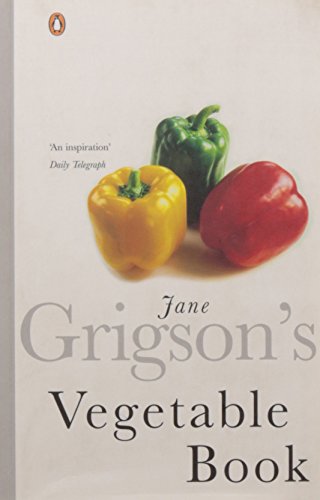
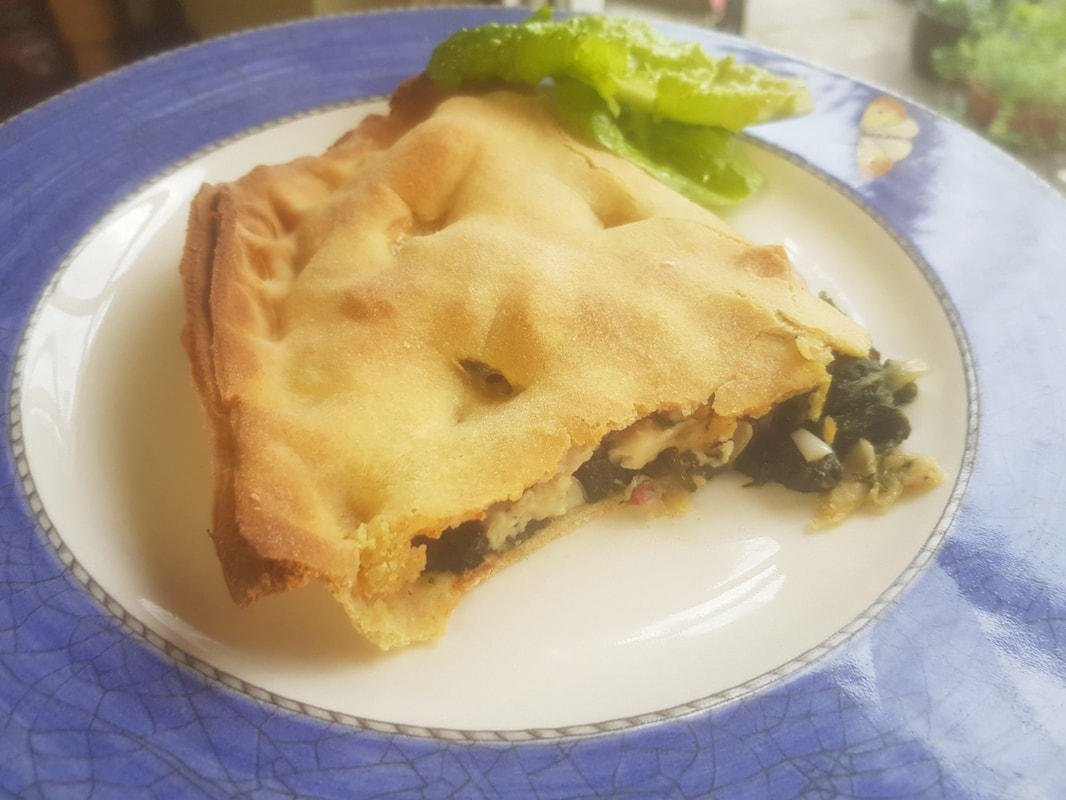
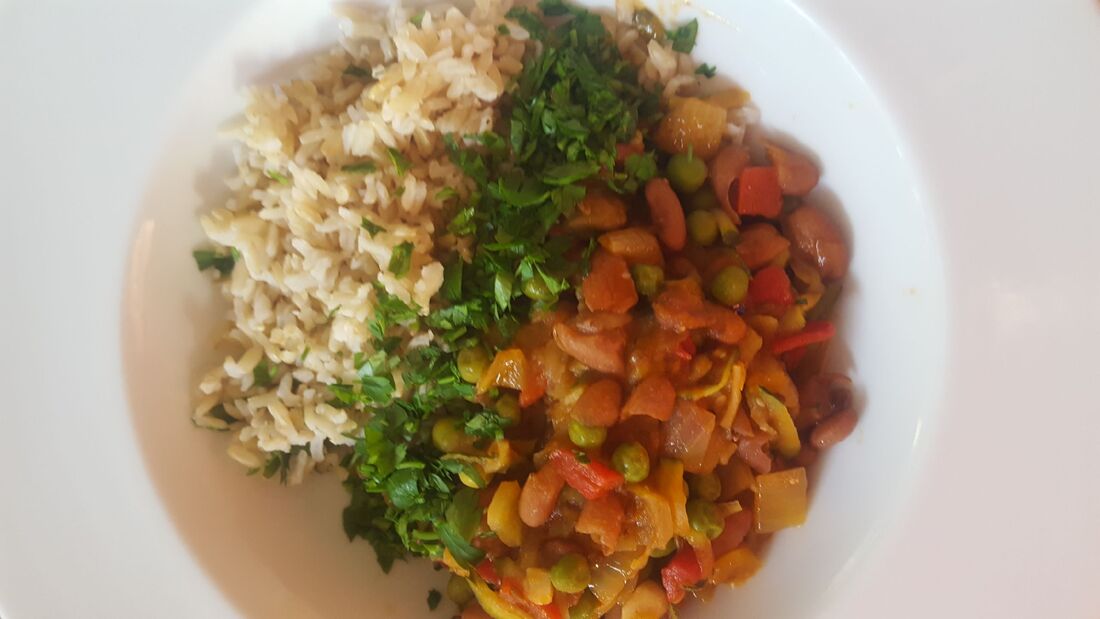
 RSS Feed
RSS Feed